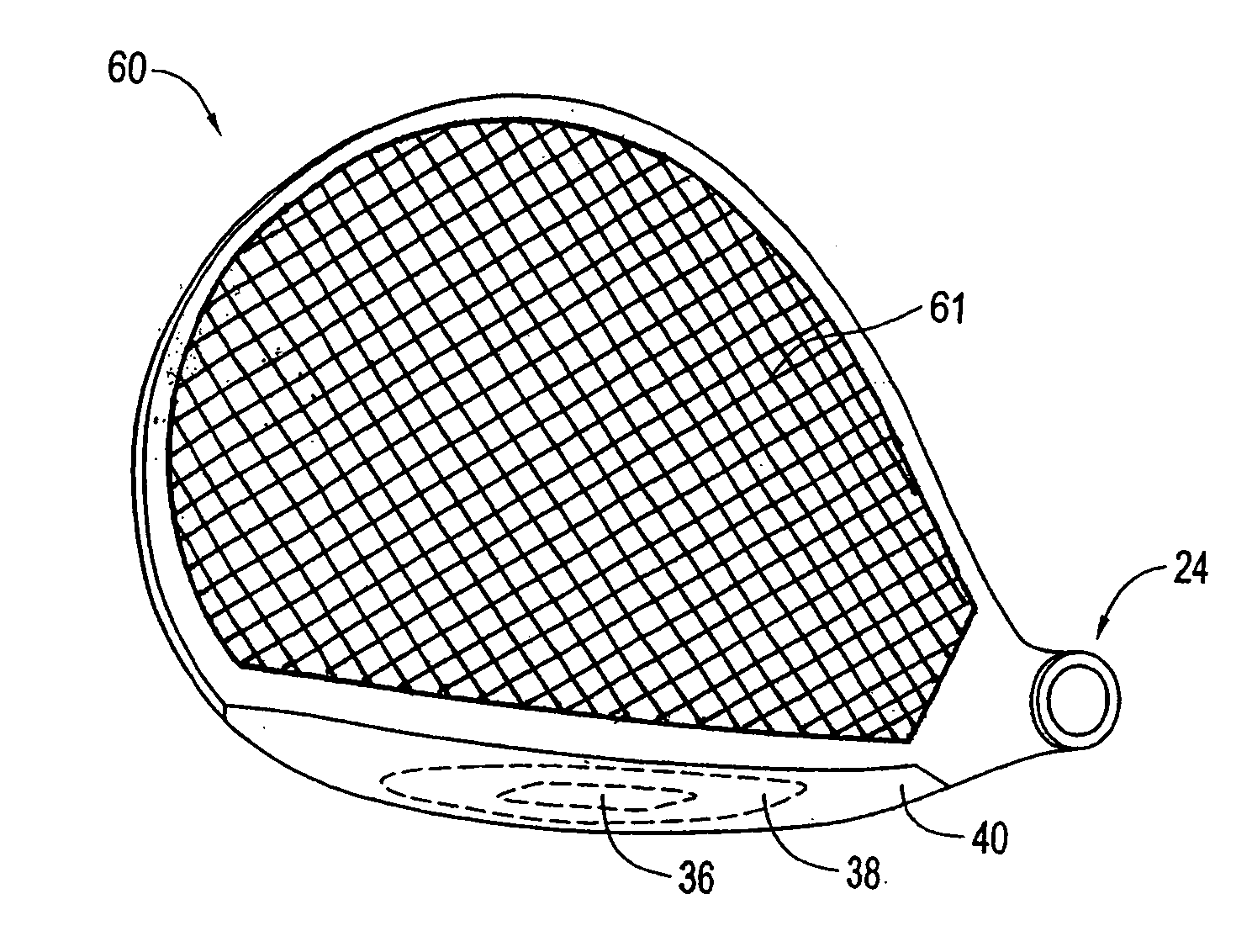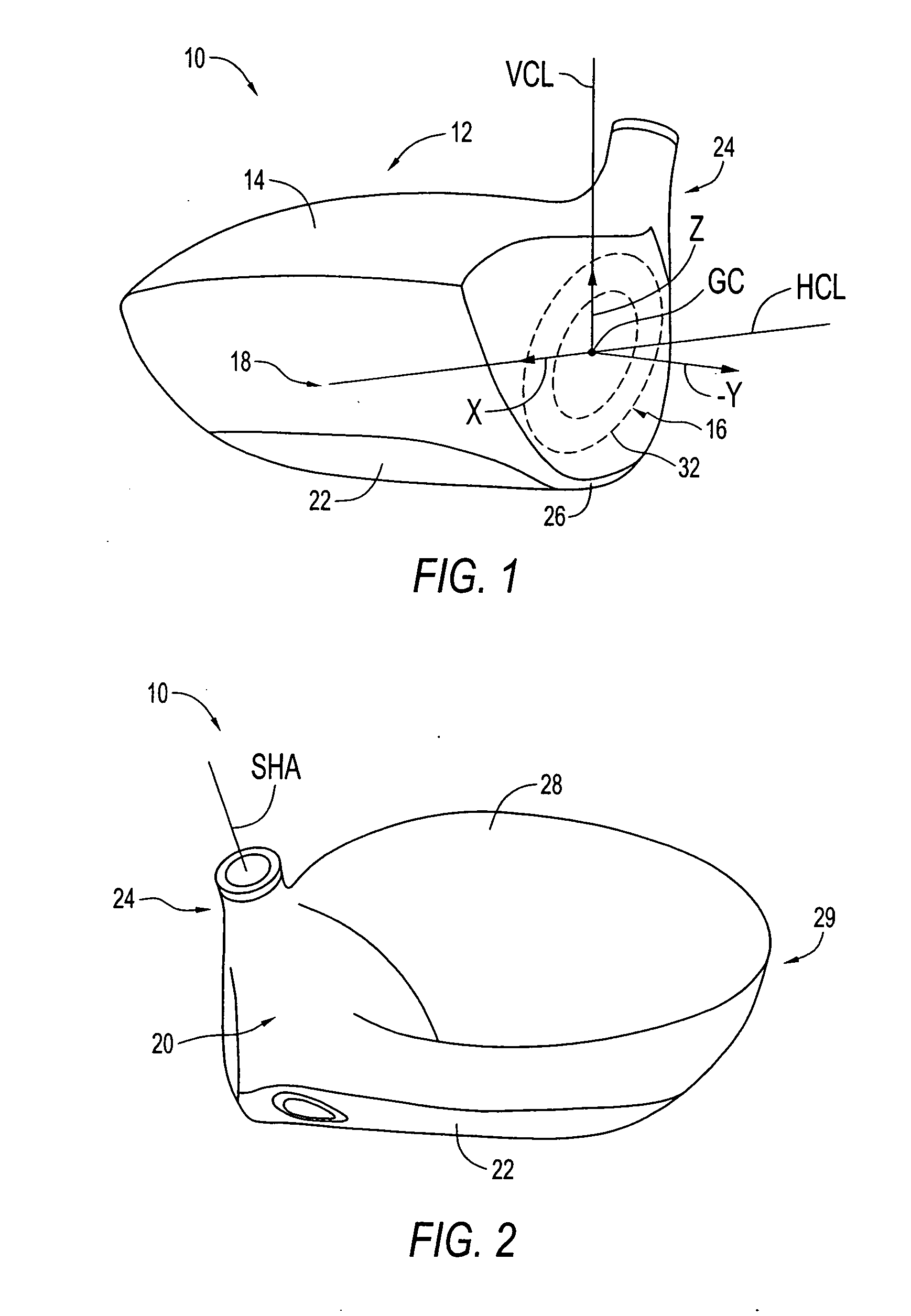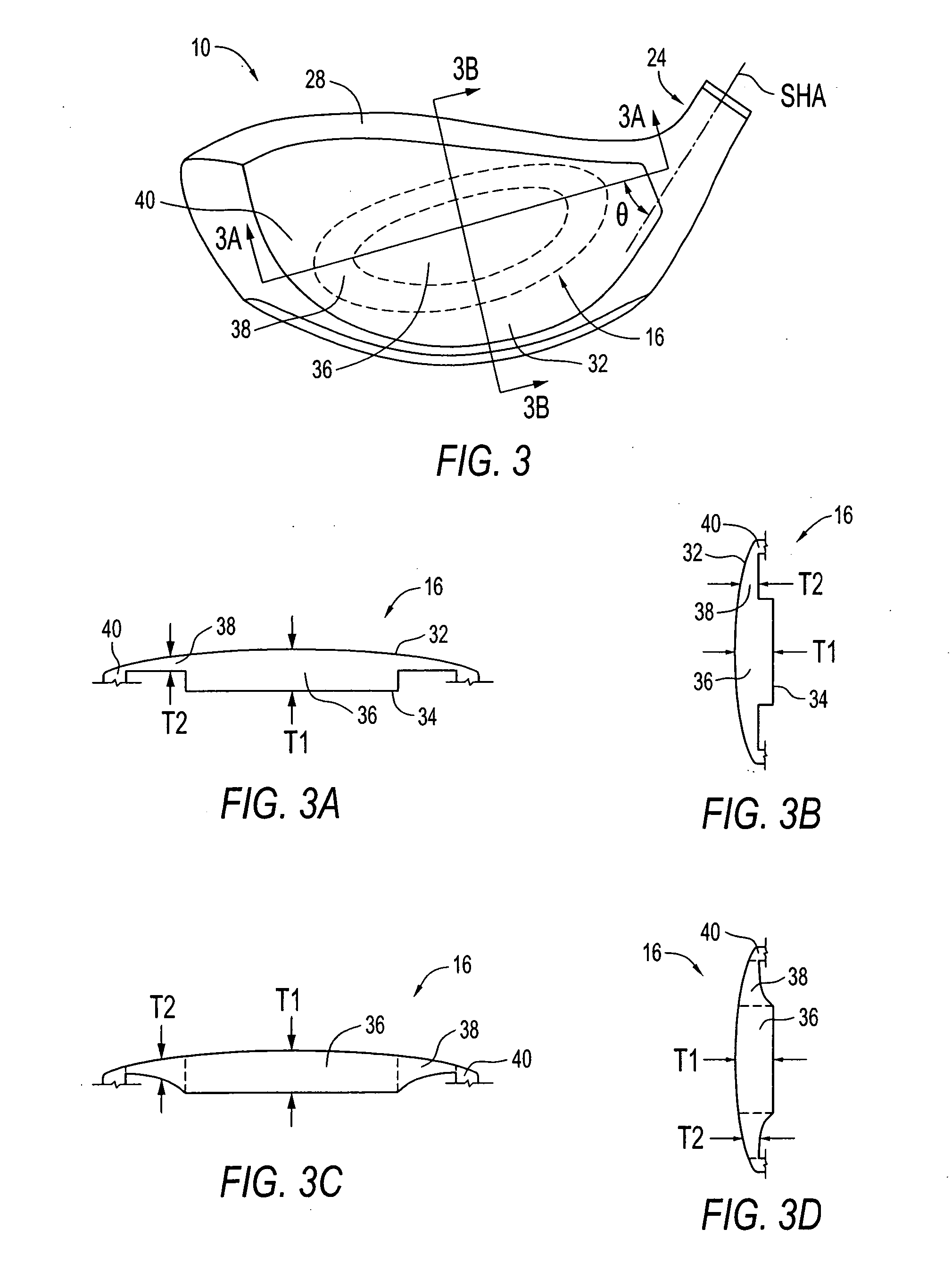Composite metal wood club
a metal wood and club head technology, applied in the field of golf club head improvement, can solve the problems of inability to teach, high dependence on the accuracy of conventional clubs, and inability to achieve the effect of aligning teaching and teaching
- Summary
- Abstract
- Description
- Claims
- Application Information
AI Technical Summary
Benefits of technology
Problems solved by technology
Method used
Image
Examples
example
[0076] In this example, hitting face 16 has the following construction. The central zone 36 has a substantially parallelogram shape, as shown in FIG. 10(a), with a major axis measuring about 3 inches and a minor axis about 0.75 inches with a thickness T1, of about 0.120 inch. The central zone 36 has a concentric transition zone 37 with a similar shape as the central zone 36. The intermediate zone 38 surrounds the central and transition zones with a thickness T2 of 0.080 inch and comprises the remainder of the face hitting area. There is no perimeter zone 40 included in this example. The major axis of zone 36 substantially coincides with the major axis of zone 38, and these two major axes form angle theta (θ) of about 50° with the shaft axis. Furthermore, zones 36 and 37 comprise about 18% of the total face surface area. A single homogeneous material, preferably a titanium alloy, with a Young's modulus (E) of approximately 16.5×106 lbs / in2 is used. In this example, the (FS1 / FS2) rati...
PUM
| Property | Measurement | Unit |
|---|---|---|
| frequency | aaaaa | aaaaa |
| thickness | aaaaa | aaaaa |
| velocity | aaaaa | aaaaa |
Abstract
Description
Claims
Application Information
 Login to View More
Login to View More - R&D
- Intellectual Property
- Life Sciences
- Materials
- Tech Scout
- Unparalleled Data Quality
- Higher Quality Content
- 60% Fewer Hallucinations
Browse by: Latest US Patents, China's latest patents, Technical Efficacy Thesaurus, Application Domain, Technology Topic, Popular Technical Reports.
© 2025 PatSnap. All rights reserved.Legal|Privacy policy|Modern Slavery Act Transparency Statement|Sitemap|About US| Contact US: help@patsnap.com



